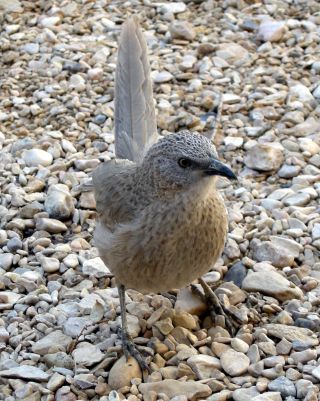Cognition
Birds’ Preparation Methods Vary with the Meal
Arabian babblers flexibly use different processing methods for specific foods.
Posted May 15, 2024 Reviewed by Lybi Ma
Key points
- Arabian babblers transport specific prey to different surfaces for different types of processing.
- The birds rub the hairs off some caterpillar species and pulverize the insides of others.
- This cognitive flexibility may enable the birds to access more food sources.
_group.jpeg.jpg?itok=wRnFikw1)
Field observations of Arabian babblers show that the birds transport different caterpillar species to distinct substrates depending on how they need to process the caterpillar for eating. The findings, reported in the journal Animal Cognition, are among the few to describe flexible food processing methods in wild animals.
Different Ways to Eat a Caterpillar
This discovery was born of opportunistic observations. Scientists have continuously monitored a wild population of Arabian babblers at the Shezaf Nature Reserve in Israel since 1971. The birds are habituated to human presence, and, since they are individually marked, researchers know a lot about each bird’s life history and relationships.
A few years ago, Yitzchak Ben Mocha was collecting videos of the babblers for his Ph.D. research on their gestural communication.
“Spending hours in the field, I started to notice that they manipulate their food before eating it,” says Ben Mocha, who is now at the University of Konstanz in Germany. “I saw the behavior again and again and wondered if there was more to it.”
.jpg?itok=tl-nNJXT)
Ben Mocha’s observations led to more systematic data collection, which revealed that these Arabian babblers use different methods of food extraction and processing for different prey. (Watch a video here.)
Some caterpillars are covered in long setae (hair-like structures). These are carefully rubbed or brushed on a rough substrate such as sand before the entire caterpillar is eaten. If the caterpillar is not already on a sandy surface, the babbler will transport it to such a surface for processing.
Other caterpillar species that lack setae are transported to a hard substrate and pounded until their insides spill out, after which only the external body is eaten.
At this point, Ben Mocha and colleagues aren’t certain why the babblers prepare their meals these ways. But they speculate that the birds’ methods may make the caterpillars more palatable. For instance, brushing hairy caterpillars may remove their potentially toxic setae. Pounding, on the other hand, may remove the guts from species that are more likely to harbor unprocessed toxins or parasites.
Power of Observation
Overall, Ben Mocha emphasizes that this paper is the first description of this behavior in Arabian babblers, and it raises additional questions.
“There is still much we do not know,” he says. “We describe the behavior, but we do not know how it’s learned or why.”
The researchers would like to see more research into why the babblers prepare these caterpillars the way they do, as well as how the behavior develops; it remains to be seen whether the food-processing behaviors of these birds are genetically hardwired or individually learned, or socially transmitted. Future studies may also investigate potential cultural differences in how different populations of babblers manipulate or process food.
For Ben Mocha, this discovery is a reminder that if you look carefully, you may find something amazing right in front of you.
“You start with an observation, but then you see it again and there is another detail, and then you start to form a picture,” he says. “The result is a better understanding of the system, but it’s all built from tiny observations, and each one of them is a piece of the puzzle.
“We just need to look at the world around us very carefully.”

References
Ben Mocha Y, Frisoni F, Keynan O, Griesser M. Proto-tool use for food processing in wild Arabian babblers: matching processing methods, substrates and prey types. Anim Cogn. 2024 Apr 24;27(1):35. doi: 10.1007/s10071-024-01866-6.


